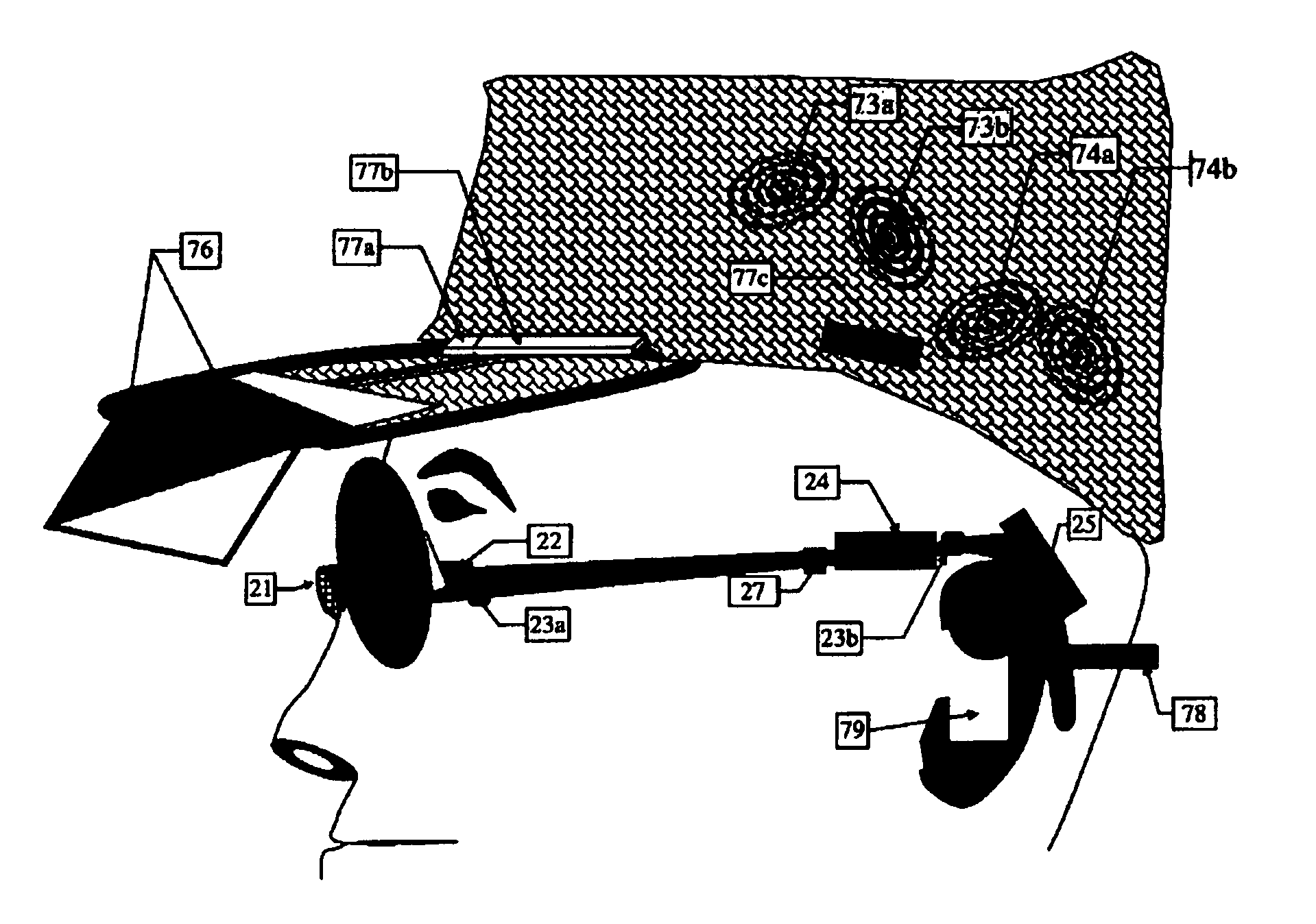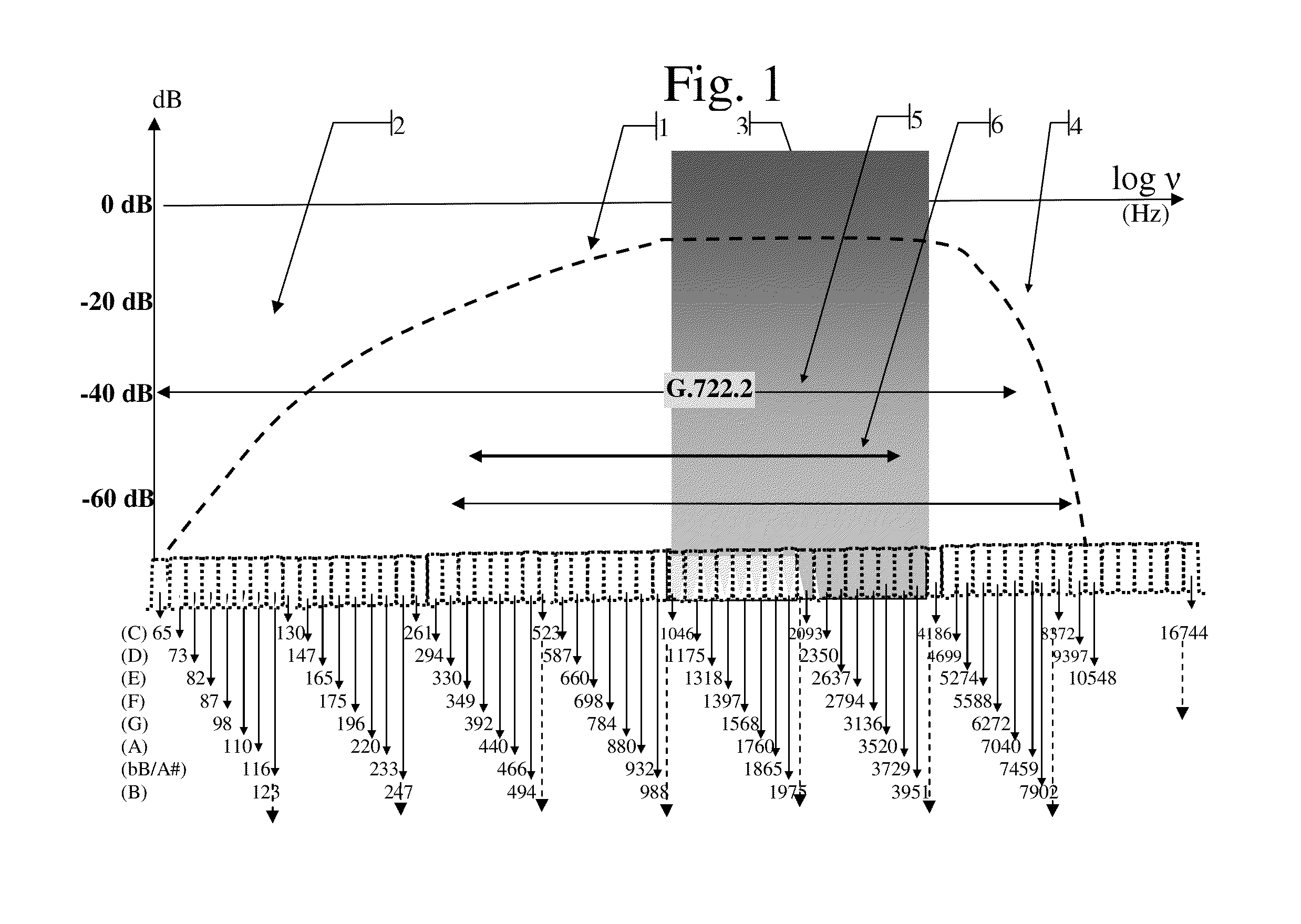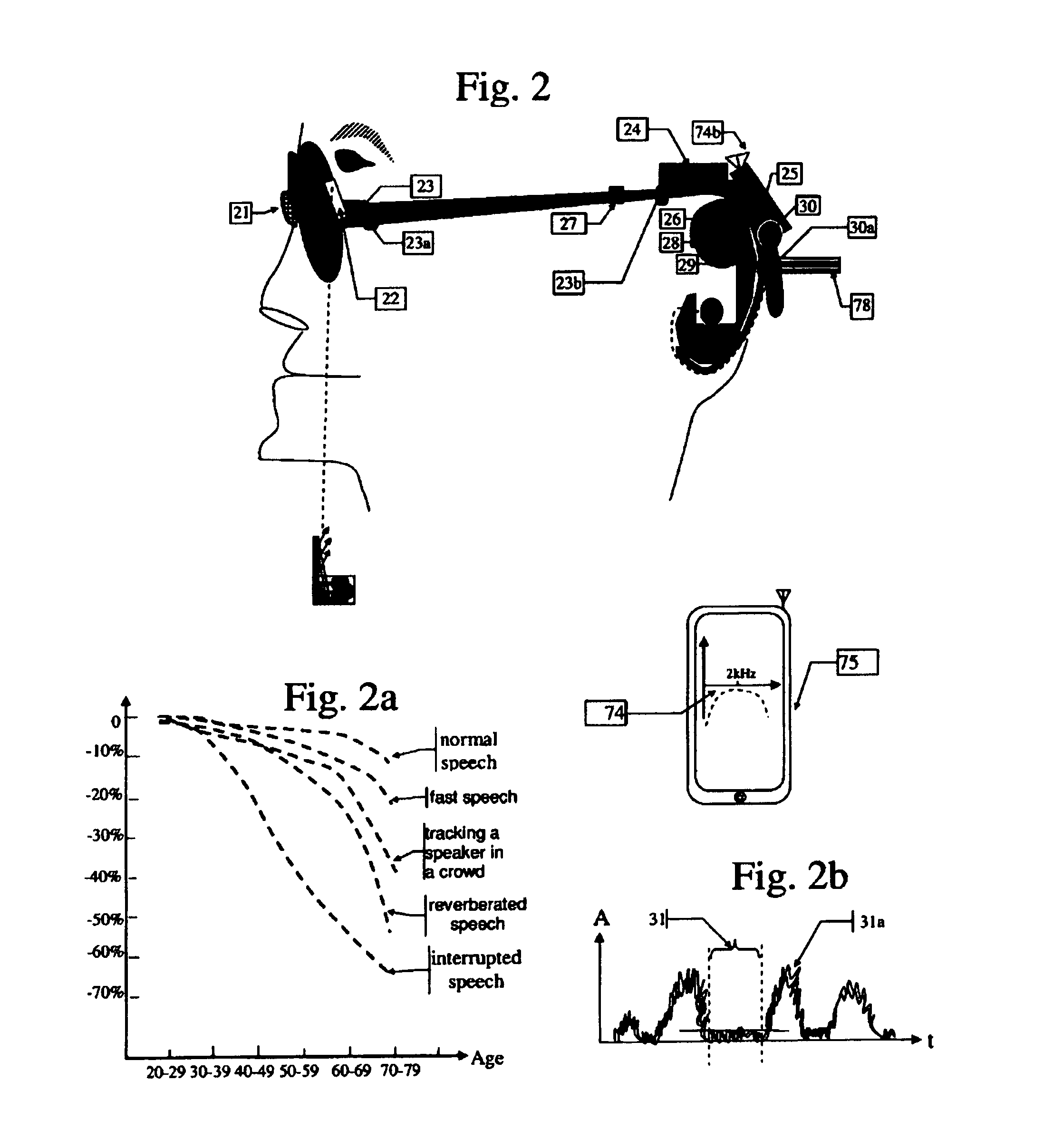Hearing devices based on the plasticity of the brain
a brain plasticity and hearing technology, applied in medical devices, artificial respiration, sleep inducing/ending devices, etc., can solve the problems of limited achievement of the benefit of multi-channel non-linear amplification, and achieve the effect of improving speech understanding
- Summary
- Abstract
- Description
- Claims
- Application Information
AI Technical Summary
Benefits of technology
Problems solved by technology
Method used
Image
Examples
Embodiment Construction
[0052]The following detailed description, provide a thorough understanding of the invention while omitting specific details, that are known by those skilled in the art.
[0053]Hearing impaired persons exhibit an “audiogram” with diminished response at low and high frequencies. FIG. 1 illustrates a “Hearing threshold” 1 of a person with moderate hearing loss between 65 Hz to 16,744 Hz divided into low frequency 2, mid frequency 3 and high frequency 4 hearing regions. Such an audiogram may be self generated by using the smartphone to generate a series of audio frequencies at varying loudnesses while the person indicates the loudness level at which he ceases to hear the signals. This audiogram shows that the person has “normal hearing” between 1 kHz and 4 khz, but has a moderate-to-steep loss of hearing below 1 kHz and above 4 kHz. In cases of precipitous hearing loss, even the understanding of normal speech in the middle frequencies may seriously be impaired and a Hearing Aid is needed....
PUM
 Login to View More
Login to View More Abstract
Description
Claims
Application Information
 Login to View More
Login to View More - R&D
- Intellectual Property
- Life Sciences
- Materials
- Tech Scout
- Unparalleled Data Quality
- Higher Quality Content
- 60% Fewer Hallucinations
Browse by: Latest US Patents, China's latest patents, Technical Efficacy Thesaurus, Application Domain, Technology Topic, Popular Technical Reports.
© 2025 PatSnap. All rights reserved.Legal|Privacy policy|Modern Slavery Act Transparency Statement|Sitemap|About US| Contact US: help@patsnap.com



